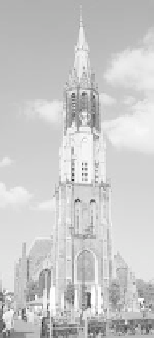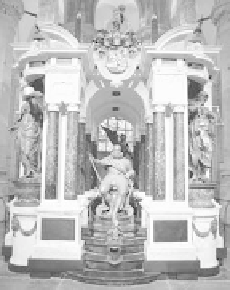Travel Reference
In-Depth Information
Arrival in Delft
From the train station (ATM on left as you leave), it's about a five-
minute walk to Market Square at the center of the Old Town: Exit
straight ahead, walk across the canal, then continue straight into
town, following signs for
Centrum
. Drivers take the Delft exit #9
off the A-13 expressway.
SIGhTS
In the Old Town
s
Churches
—Delft has two churches that hold tombs of prominent
local residents. They're both covered by the same €3.20 ticket and are
open the same hours (April-Oct Mon-Sat 9:00-18:00; Nov-March
Mon-Fri 11:00-16:00, Sat 10:00-17:00; closed to tourists Sun year-
round, tel. 015/212-3025, www.nieuwekerk-delft.nl).
The giant, Gothic
New Church
(Nieuwe Kerk) boldly domi-
nates the town from its prominent position
overlook ing Ma rket Squa re. Inside a re
buried the beloved Dutch ruler William I
(“The Silent”) of Orange (1533-1584) and
the Dutch royalty that succeeded him. It
was William who rallied the Dutch to begin
their revolt against the Spanish Habsburg
rulers. William's ornate tomb—a canopied
monument to his greatness—dominates the
choir area. It features two representations
of William: one of white marble, reclining
peacefully; and a strong, armored king in
bronze, sitting royally. At the corners of his
monument are female statues representing
Liberty, Justice, Religion, and Fortitude. The
sweet dog at his feet symbolizes loyalty. Unfortunately, all these
fine virtues could not save William from being gunned down by
an assassin's bullet ( just up the street,
right here in Delft).
William I was the founder of the
dynast y that still (in name) rules the
Netherlands. His most famous descendant
is one of the few not buried here. William
III of Orange (1650-1702), as grandson
of the English king, was called upon by
the English Parliament to bring peace
and order after the turmoil of England's
Civil War. William III was crowned
King of England and ruled alongside his
wife Mary. The two gave their name to a





















